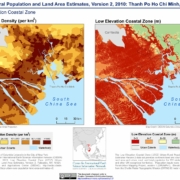Dans cet article, je vais vous montrer comment exécuter vos applications Go sans serveur, en utilisant des services cloud et des outils de développement. Partie 2 de cette série de tutoriels !
## La première partie de cette série vous a présenté le AWS Lambda Go API Proxy et comment ses implémentations d’adaptateur spécifiques au cadre / package (pour gorilla / mux, echo et net / http) vous permettent d’exécuter des applications Go existantes en tant que fonctions AWS Lambda frontées par Amazon API Gateway.
Le premier volet de cette série vous a présenté le AWS Lambda Go API Proxy et comment ses implémentations adaptées au framework/package spécifique (pour gorilla/mux, echo et net/http) vous permettent d’exécuter des applications Go existantes en tant que fonctions AWS Lambda frontées par Amazon API Gateway. Si vous ne l’avez pas encore fait, je vous encourage à y jeter un coup d’œil pour avoir une compréhension de base du AWS Lambda Go API Proxy.
Le AWS Lambda Go API Proxy prend également en charge Gin, qui est l’un des frameworks web Go les plus populaires ! Ce billet de blog suivant démontrera comment prendre un service de raccourcissement d’URL existant écrit à l’aide du framework Gin et le faire fonctionner en tant que fonction AWS Lambda sans serveur. Au lieu d’utiliser AWS SAM, nous allons changer un peu les choses et utiliser le AWS CDK pour déployer la solution.
Pour cela, nous allons créer une base de données DynamoDB pour stocker les URL raccourcies et une fonction Lambda pour gérer les requêtes entrantes. La fonction Lambda sera appelée par Amazon API Gateway et répondra aux requêtes GET et POST. La fonction Lambda utilisera la base de données DynamoDB pour stocker et récupérer les URL raccourcies. Une fois la base de données configurée et la fonction Lambda créée, nous allons utiliser le AWS CDK pour déployer le tout sur AWS.




